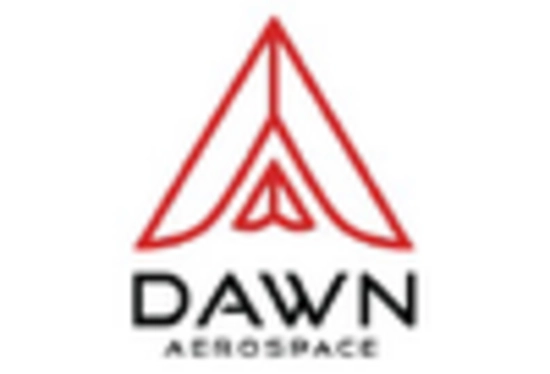The Space Debris Removal Market is currently characterized by a dynamic competitive landscape, driven by increasing awareness of the hazards posed by space debris and the urgent need for sustainable space operations. Key players such as ClearSpace (CH), Astroscale (JP), and Northrop Grumman (US) are at the forefront, each adopting distinct strategies to enhance their market positioning. ClearSpace (CH) focuses on innovative technologies for debris capture, while Astroscale (JP) emphasizes partnerships with governmental and commercial entities to expand its operational reach. Northrop Grumman (US) leverages its extensive experience in aerospace to integrate advanced robotics into debris removal solutions. Collectively, these strategies not only enhance their competitive edge but also contribute to a more robust and collaborative market environment.
In terms of business tactics, companies are increasingly localizing manufacturing and optimizing supply chains to enhance efficiency and reduce costs. The market appears moderately fragmented, with several players vying for dominance, yet the influence of major companies is palpable. Their collective efforts in research and development, alongside strategic partnerships, are likely to shape the future trajectory of the market, fostering innovation and operational excellence.
In August 2025, ClearSpace (CH) announced a partnership with the European Space Agency to develop a new debris removal mission, which is expected to launch in 2026. This collaboration signifies a strategic move towards leveraging governmental support and expertise, potentially enhancing ClearSpace's capabilities in executing complex debris removal operations. The partnership may also position the company as a leader in the European market, aligning with broader regulatory frameworks aimed at sustainable space practices.
In September 2025, Astroscale (JP) secured a significant contract with a major satellite operator to provide end-of-life services for their satellites. This contract not only underscores Astroscale's operational focus on sustainability but also highlights the growing demand for responsible satellite management. By establishing itself as a trusted partner in the satellite lifecycle, Astroscale is likely to enhance its market share and influence in the space debris removal sector.
In July 2025, Northrop Grumman (US) unveiled a new robotic system designed for debris capture, showcasing its commitment to technological innovation. This development is particularly noteworthy as it reflects the company's strategy to integrate cutting-edge technology into its operations, potentially setting a new standard for efficiency and effectiveness in debris removal. The introduction of such advanced systems may also attract interest from various stakeholders, including governmental agencies and private sector players.
As of October 2025, the competitive trends in the Space Debris Removal Market are increasingly defined by digitalization, sustainability, and the integration of artificial intelligence. Strategic alliances are becoming more prevalent, as companies recognize the value of collaboration in addressing complex challenges. Looking ahead, it appears that competitive differentiation will evolve from traditional price-based competition to a focus on innovation, technological advancement, and supply chain reliability. This shift may ultimately redefine the market landscape, fostering a more sustainable and efficient approach to space operations.


















Leave a Comment